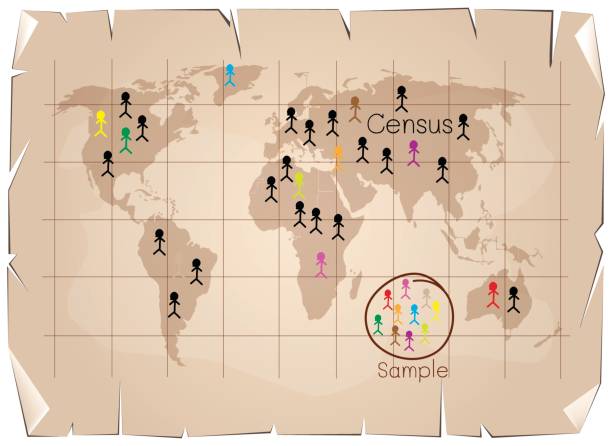Deciphering the Core Concepts of Sample Representation

Introduction
The way we collect and interpret data has forever been transformed thanks to the digital age. Among the myriad terms and concepts central to data analysis, the term “Representative Sample” stands tall. Understanding this concept can unlock the door to efficient and accurate research. This guide would be very helpful for anyone who is interested in learning Representative Sampling.
What is a Representative Sample?
A Representative Sample refers to a subset of a population that accurately reflects the members of the entire population. The point is to make it look like a movie trailer, you get a fairly good idea of what you can expect from the film from it.
Why is a Representative Sample Important?
Efficiency: Studying a large population takes time, funds and energy, but when you focus on a more concentrated but diverse group, the findings can be concluded comparatively sooner.
Accuracy: A well-chosen sample can provide results that mirror the entire population, ensuring research validity.
Feasibility: Some studies would be impossible (or unethical) on the entire population. A representative sample offers a practical alternative.
Methods to Achieve a Representative Sample
Random Sampling: Every individual has an equal chance of being selected.
Stratified Sampling: The population is divided into subgroups, and random samples are taken from each.
Cluster Sampling: The population is divided into segments or clusters, and a selected few are studied in detail.
Common Pitfalls and How to Avoid Them
Bias in Selection: Making sure that personal biases do not interfere during the research process is very important, so favoring one group over another is a strict no.
Non-Response: Sometimes, selected individuals refuse to participate. It’s essential to ensure their views aren’t underrepresented.
Sample Size: Even though Representative sampling is about studying a smaller population in detail, the sample cannot be too small, as then the diversity of the population cannot be captured.
Representative Sample in the Digital Age
With the advent of machine learning and big data, representative sampling has never before been as important. From training AI models to interpreting social media trends, this concept is central to modern research methodologies.
Case Studies: Representative Sample in Action
Case Studies: Representative Sample in Action
1. Medical Research: Vaccine Development
The development and testing of new vaccines require clinical trials that involve administering the vaccine to a group of participants and observing its effects.
Representative Sample in Action:
For the recent COVID-19 vaccine development, researchers used a representative sample, ensuring participants from diverse age groups, ethnicities, and health backgrounds were included. This helped ensure that the vaccine’s effects were studied across a variety of population segments, mirroring the larger global population.
Outcome:
By using a representative sample, vaccine developers could ascertain the vaccine’s efficacy and safety for most demographic groups. It also built trust among the global population, knowing that the vaccine had been tested on a diverse group of people similar to themselves.
2. Market Research: Predicting the Next Big Trend
Companies constantly strive to predict market trends to stay competitive and meet consumer demands.
Representative Sample in Action:
A tech company planning to launch a new smartphone feature might survey a sample representing various age groups, tech-savviness levels, and geographical locations. This sample would help them understand the feature’s appeal across these diverse groups.
Outcome:
Through feedback from the representative sample, the company can predict how well the feature might be received in the broader market, identify potential modifications, and fine-tune their marketing strategy to target the right demographics.
3. Environmental Studies: Monitoring and Predicting Climate Changes
Understanding and predicting climate changes is vital to prepare and mitigate potential adverse effects on our planet.
Representative Sample in Action:
Researchers studying sea level rise might take water and ice samples from various regions – polar, temperate, and tropical. Each sample represents its specific region, providing insights into global patterns when studied collectively.
Outcome:
By analyzing these representative samples, scientists can detect patterns, such as increasing water temperatures or decreasing ice thickness. The data combined can act as a comprehensive view on the current global trends, thus helping with more accurate predictions about future climate situations and making sure policymakers create informed decisions.
The Future of Representative Sampling
While traditional methods remain relevant, the advent of advanced algorithms and AI is reshaping the landscape. The need for even more accurate and quick sampling methods is on the horizon.
Conclusion
The realm of the Representative Sample is vast and integral to the fabric of research and data interpretation. The importance of this cannot be emphasized enough in this era where data holds most importance. Whether you are in medical studied, market research or simply working on an assignment, a proper understanding of the concept of representative sampling is required to guide you to achievement.

FAQs
- Why can’t researchers study the whole population?
Studying an entire population can be time-consuming, expensive, and sometimes, impractical or impossible. A representative sample provides an efficient and accurate alternative.
- How do you ensure a sample is truly representative?
By employing proper sampling techniques, avoiding biases, and ensuring adequate sample size, one can ensure the sample’s representativeness.
- Does a bigger sample always mean better results?
Not necessarily. The key is not just size but how representative the sample is of the entire population.
- How does technology impact sampling techniques?
The digital age provides tools for quicker and more accurate sampling. AI and machine learning are at the forefront of this revolution.
- Are there any areas where a representative sample is not used?
There are research areas where other sampling methods might be preferred due to the nature of the study or the population in question.
- What are the consequences of a poor sample?
A non-representative sample can lead to inaccurate results, which can misinform decisions, policies, and strategies.
External Links/ Sources:
What Is a Representative Sample?
